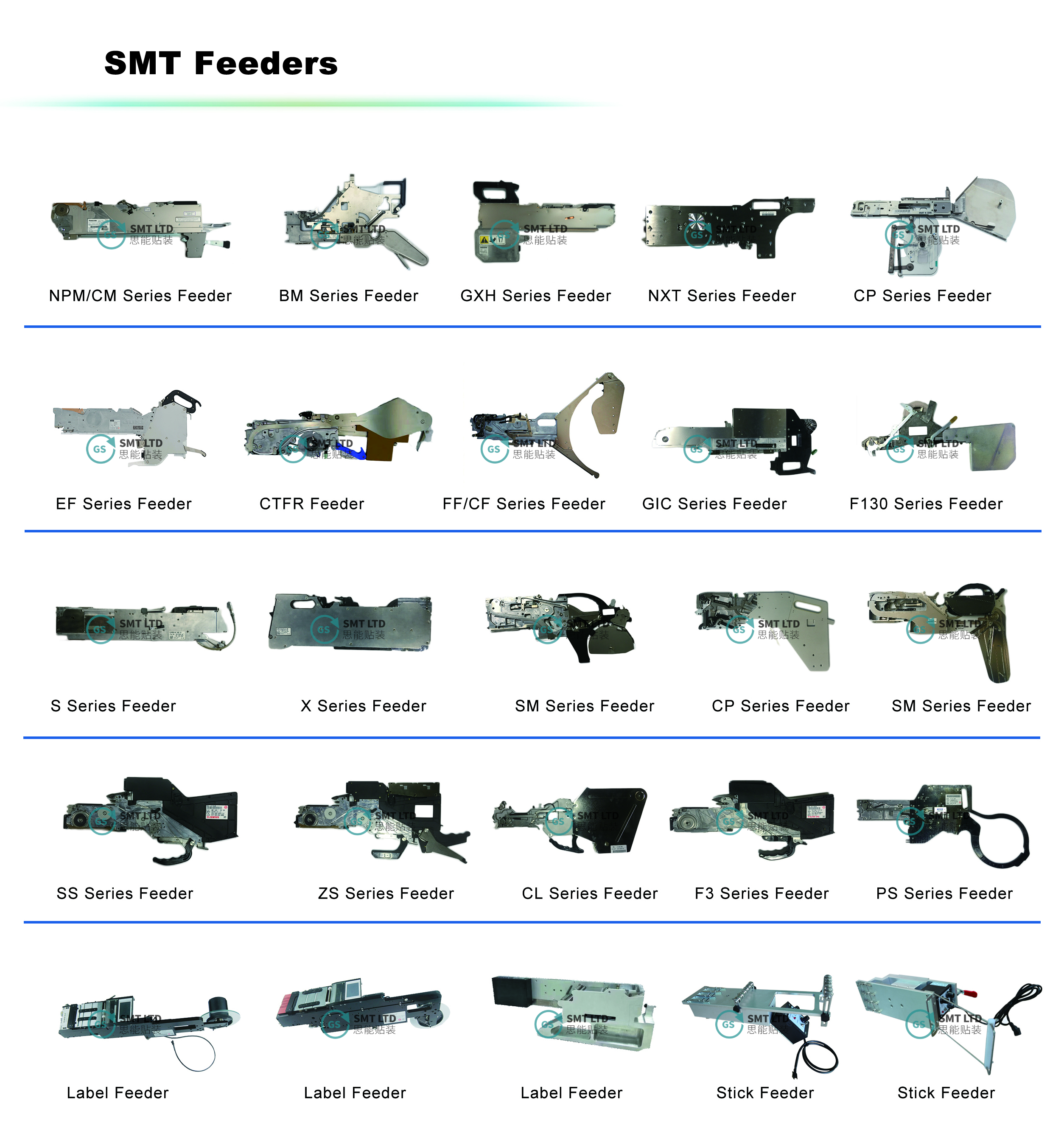
Yamaha CL Feeder Series KW1-M1300-00X KW1-M1300-000
Brand Name :YAMAHA
Product name:Feeder
Model Number:
KW1-M1300-000 CL feeder
KW1-M1300-00X CL feeder
Condition:original new/used original
Lead time:1-3 Days
MOQ : 1 PCS
Adjusting the feeding of a Yamaha CL feeder involves several steps to ensure smooth and accurate component feeding. Here's a general guide on how to adjust the feeding of a Yamaha CL feeder:
1.Stop Machine Operation:
- Before making any adjustments, stop the pick and place machine's operation and ensure that it is safely turned off.
2.Identify Feeding Issues:
- Determine the specific feeding issues you are experiencing with the Yamaha CL feeder. This could include misfeeds, double feeds, or component misalignment.
3.Inspect Feeder Components:
- Thoroughly inspect the feeder components, including rollers, guides, and pick-up heads, for any signs of wear, damage, or misalignment.
- Ensure that all feeder parts are clean and free from debris or residue buildup that may interfere with feeding.
4.Adjust Feeder Settings:
- Use the feeder control interface or software to adjust feeder settings such as feeding speed, feeding pitch, and feeding position.
5.Check Component Compatibility:
- Ensure that the components being used are compatible with the feeder size and specifications. Components that are too large, too small, or too heavy for the feeder may cause feeding issues.
6.Calibrate Feeder:
- Perform feeder calibration to ensure accurate component feeding and placement. This may involve adjusting sensor settings, feeder pitch, or other calibration parameters.
7.Test Feeder Operation:
- After making adjustments and calibrating the feeder, test its operation with a small batch of components.
- Monitor the feeder during operation to ensure that components are feeding smoothly and accurately.
8.Fine-Tune Feeder Settings:
- If necessary, fine-tune feeder settings based on the results of the test operation. Make incremental adjustments as needed to achieve optimal feeding performance.
9.Document Adjustments:
- Keep records of the adjustments made to the feeder settings, including the changes implemented and any observed improvements in feeding performance.
- Use this information for future reference and troubleshooting purposes.
10.Training:
- Provide training to operators on proper feeder adjustment procedures and troubleshooting techniques.
- Ensure that operators are familiar with feeder operation and maintenance to minimize feeding issues.
By following these steps, you can effectively adjust the feeding of a Yamaha CL feeder to ensure smooth and accurate component feeding in surface mount technology (SMT) assembly processes.
Hot tags:Yamaha CL Feeder KW1-M1300-00X,KW1-M1300-00X feeder specifications,Yamaha CL feeder models KW1-M1300-000,KW1-M1300-00X feeder for Yamaha CL machine,KW1-M1300-000 Yamaha CL pick and place feeder,KW1-M1300-000 Yamaha CL feeder parts,CL feeder manual Yamaha KW1-M1300-000,Yamaha CL feeder troubleshooting,KW1-M1300-00X feeder calibration Yamaha CL,Yamaha CL feeder price KW1-M1300-000,china,wholesale, cheap, low price, manufacturers, factory, suppliers, for sale, in stock





































